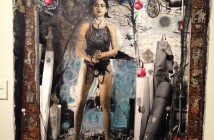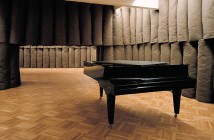
Cadmium beauty.
There is something luscious about red. This one in particular. It is so pure and vibrant that the addition would only diffuse its impact. Dumas slathers her composition in it. That bright cadmium jumps forward so aggressively that it is hard to convince yourself that this is not the painting’s best feature. Is this supposed to be the background? It is monotoned and boring and it does not deserve the spotlight but it hogs it from the woman’s eyes and lips, which draw our eyes but fall flat, holes in the beautiful fabric of red.
I saw this painting for the first time at the ICA Boston 1980s exhibition, This Will Have Been. I walked in the room and I recognized it immediately, as a Marlene Dumas, though I only know her work because of its records at auction. Right away it jumps to you with its beautiful parts. All the things that a painting is supposed to be beautiful for. That luscious red, the transparent eyes, delicate lips. But in the second second you feel this emptiness, the painting exposes itself as less than all of those bits put together. There is an eerie lack of substance in that bold visage.
Stand in front of it and push through the red and the image drops away. The painting becomes about this airy place behind the cadmium sheer. The girl is in your face and up close against the canvas but she is a ghost and you don’t know her.
This is the horror of a face deprived of skin and muscle, of shadow and space. It is the spook of disembodied features, sunken beneath a pool of lustful red. Her hair could not shake out, move aside — it is plastered stiff in its place by that heavy cadmium.
I am interested in this void in spite of myself. For me, the piece becomes about that emptiness. The tragedy of beauty haunts this painted ghost.
•••
Image Information: Marlene Dumas, Jule-die Vrau, 1985
Oil on canvas, 125 x 105 cm



